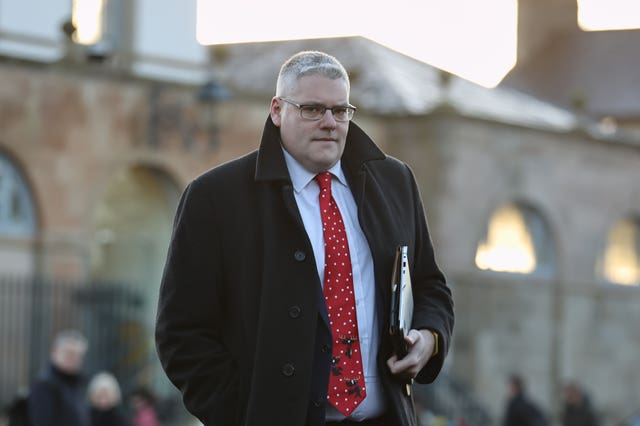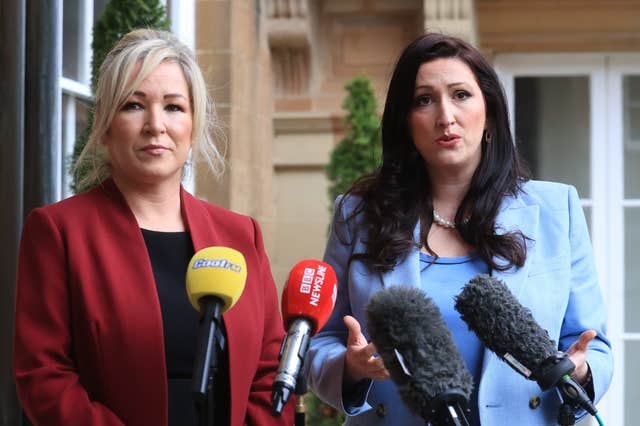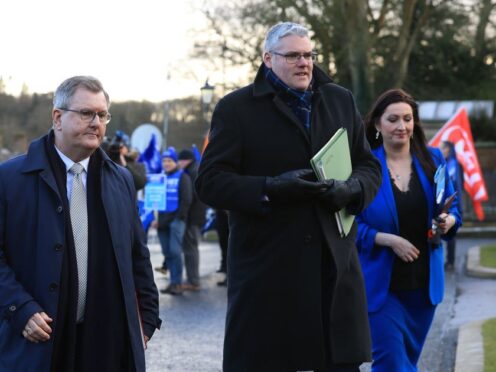The deal that restored powersharing in Northern Ireland hinged on the backing of Sir Jeffrey Donaldson and the shock resignation of the DUP leader is sure to prompt questions over the future of that arrangement.
Much will depend on who ultimately replaces him.
East Belfast MP Gavin Robinson, who has stepped up to become interim leader, has been a long-time ally of Sir Jeffrey and a firm backer of the return to Stormont.
Mr Robinson would be an early favourite to become the permanent successor and his elevation would be unlikely to prompt a change in the party’s recent enthusiastic backing for the devolved institutions.

However, his election as leader is not a foregone conclusion and it remains to be seen if other candidates, potentially more sceptical of the return to powersharing, will emerge.
The identity of the new leader could have ramifications for DUP deputy First Minister Emma Little Pengelly as she was very much a Donaldson pick as the party’s nominee to jointly lead the Stormont coalition.
Ms Little Pengelly and Sinn Fein First Minister Michelle O’Neill have received significant praise for their leadership of the administration since taking charge of the resurrected executive in February.
Question marks will also now hang over the DUP’s grip on the Lagan Valley parliamentary constituency, given the possibility of an imminent by-election.
Sir Jeffrey’s majority was significantly cut in the last general election amid a surge by the cross-community Alliance Party and the DUP will likely face a tough fight to hold the seat whenever voters next go to the polls.
Appointed leader in the summer of 2021, Sir Jeffrey made the call early the following year to withdraw then DUP first minister Paul Givan from the Stormont Executive, thus collapsing powersharing, as part of the party’s protest strategy against post-Brexit economic barriers on trade between Great Britain and Northern Ireland.

Almost two years later, after protracted negotiations with the Northern Ireland Office and Downing Street, he signed up to a Government package of proposals, outlined in its Strengthening the Union command paper, that were aimed at reducing red tape on Irish Sea trade and providing assurances over Northern Ireland’s place in the Union.
He championed the party’s return to the Executive and Assembly on the back of the deal, hailing what he said were significant concessions.
Sir Jeffrey insisted a large majority of the party supported his decision to end the Stormont boycott and recent opinion polling suggests a majority of DUP voters are also supportive of the return to devolution.
However, a significant minority of DUP elected representatives remain opposed to the deal, insisting it does not go far enough to remove the contentious “Irish Sea border” and several senior figures have been vocal in articulating their criticism.
Former deputy leader Lord Dodds, party chairman Lord Morrow and East Antrim MP Sammy Wilson are among those who have made no secret of their opposition.
It will become apparent in the days and weeks ahead whether Sir Jeffrey’s resignation, and the manner of it, injects fresh momentum to those inside and outside the party campaigning against the return of powersharing, or whether it will continue to be business as usual at Stormont when a new leader takes the helm.
